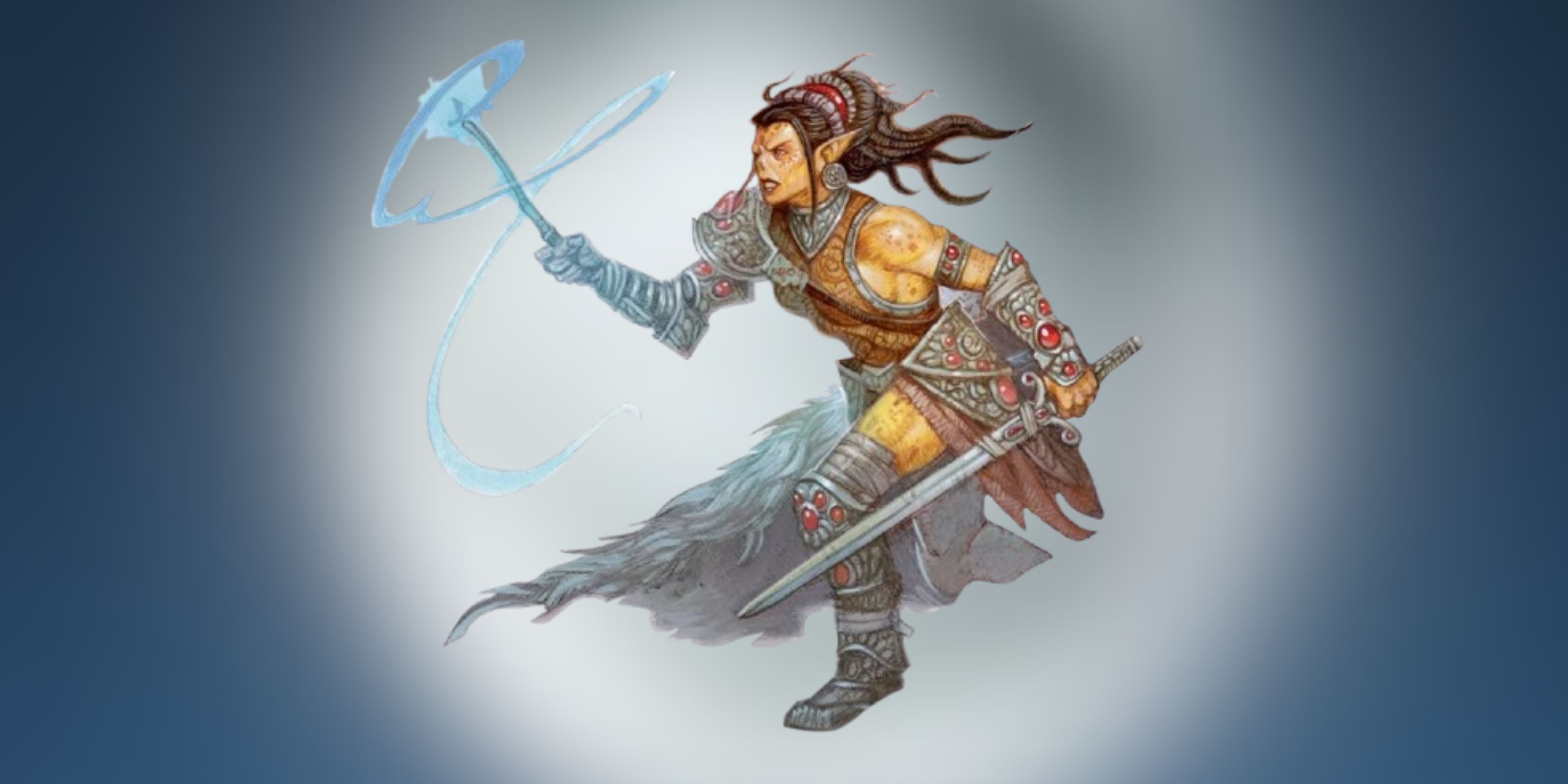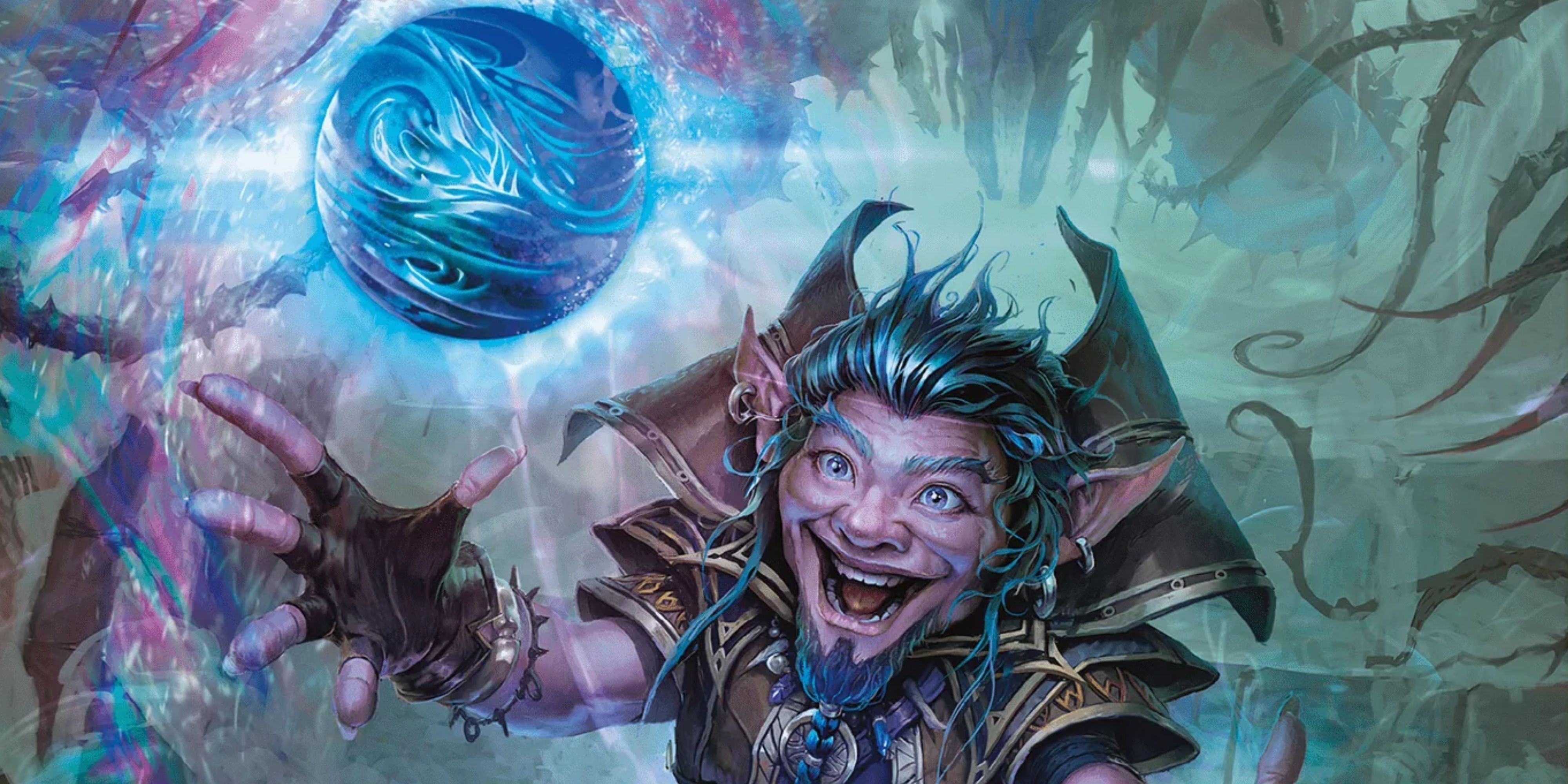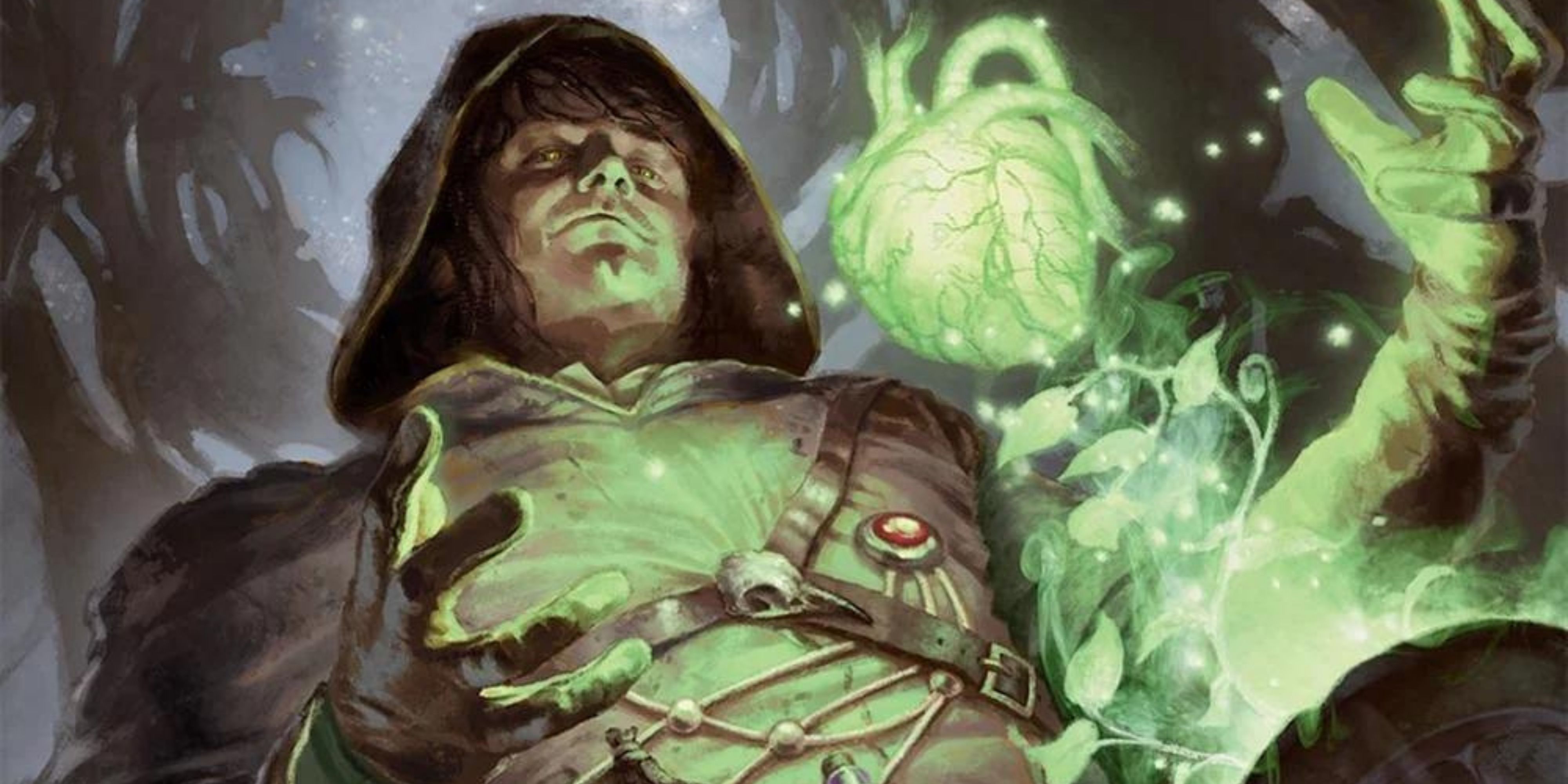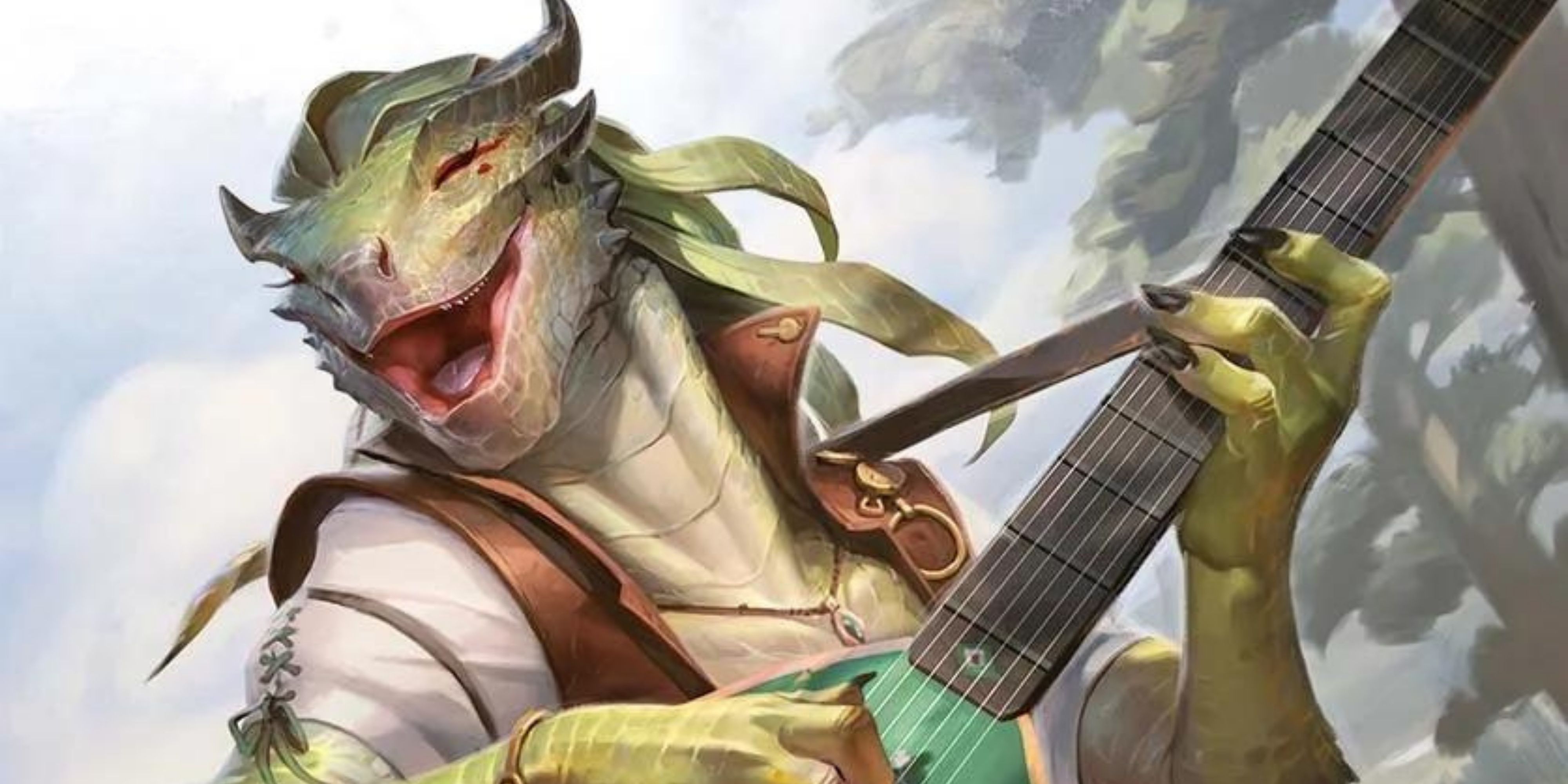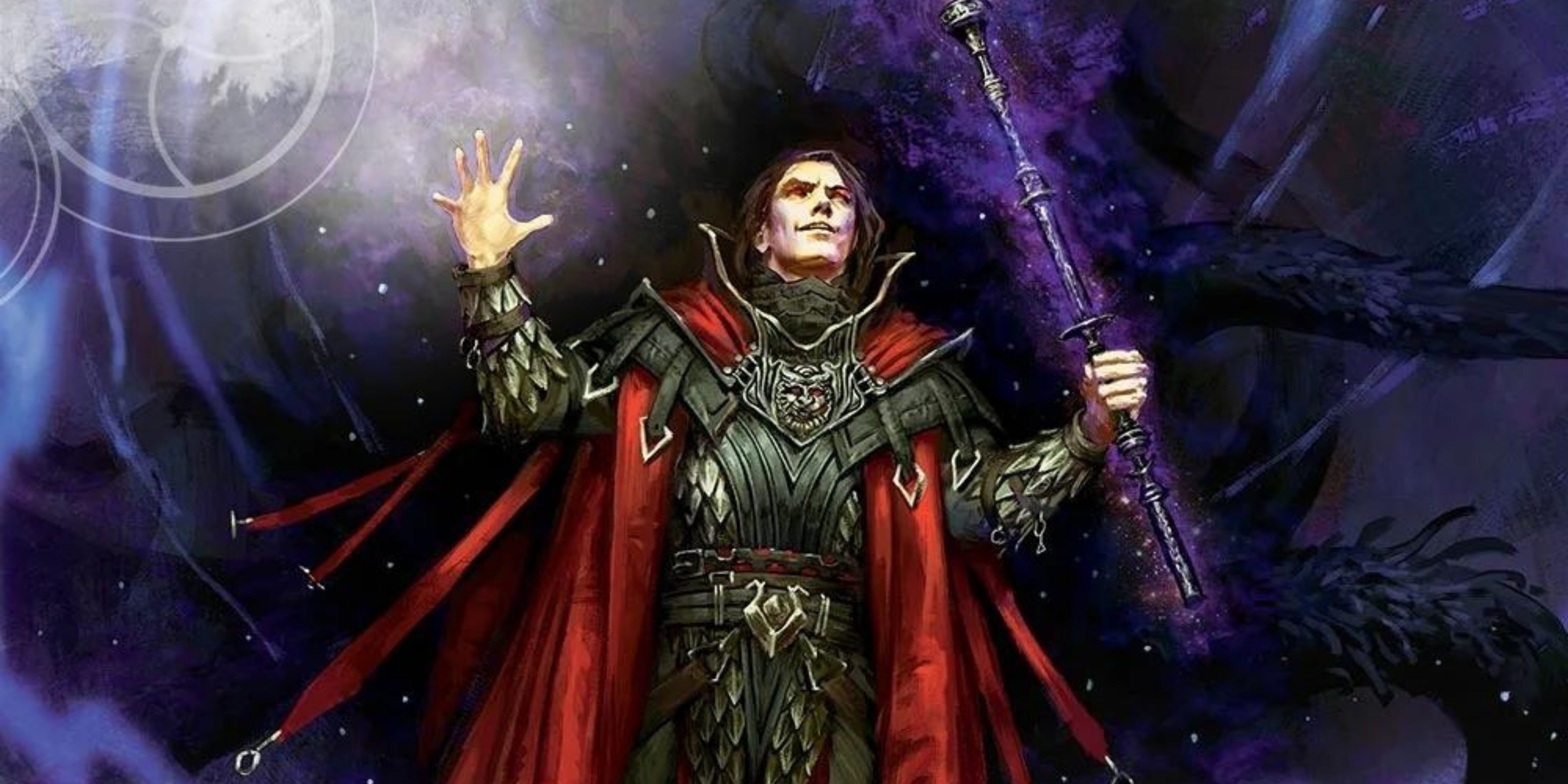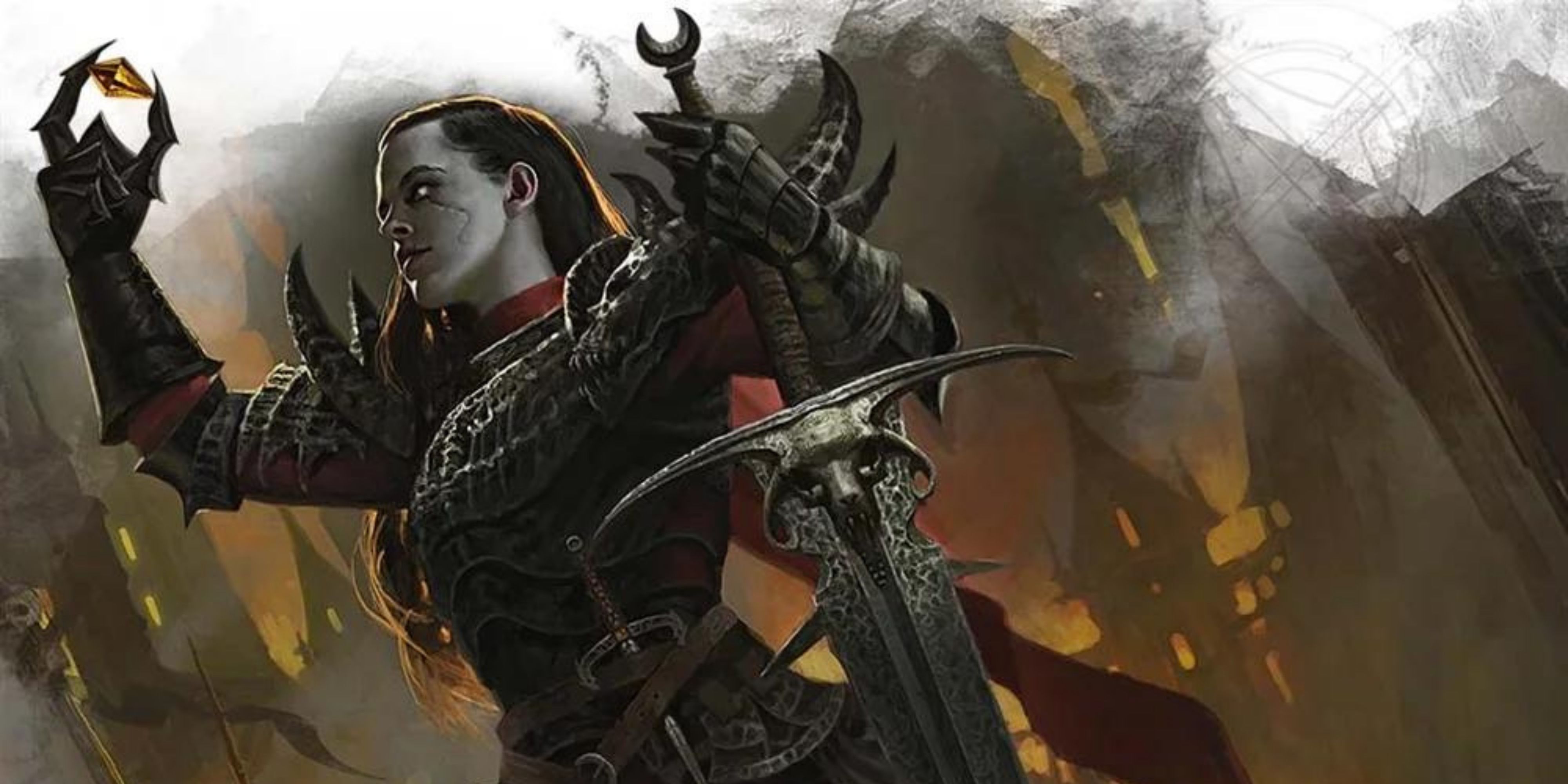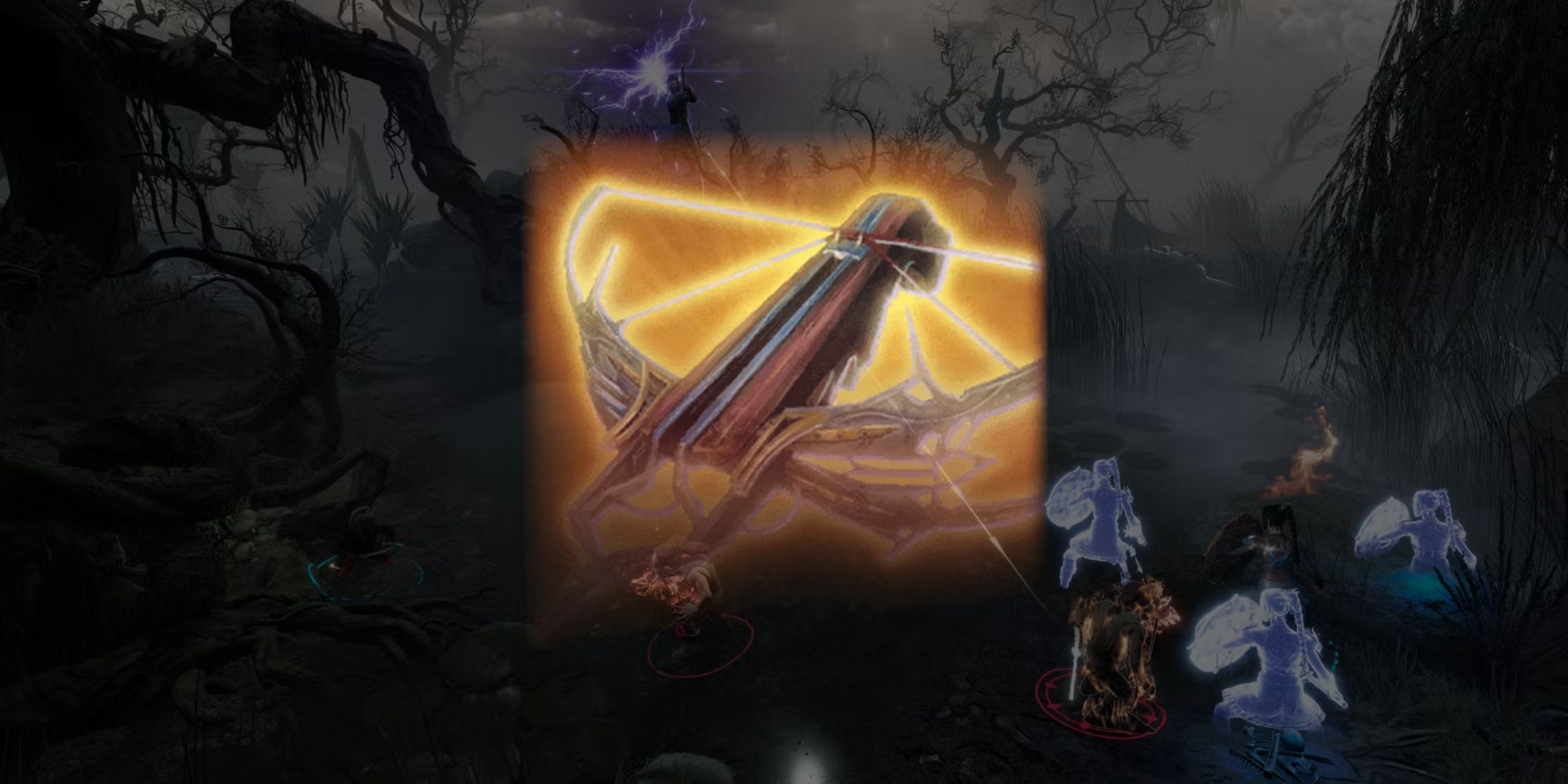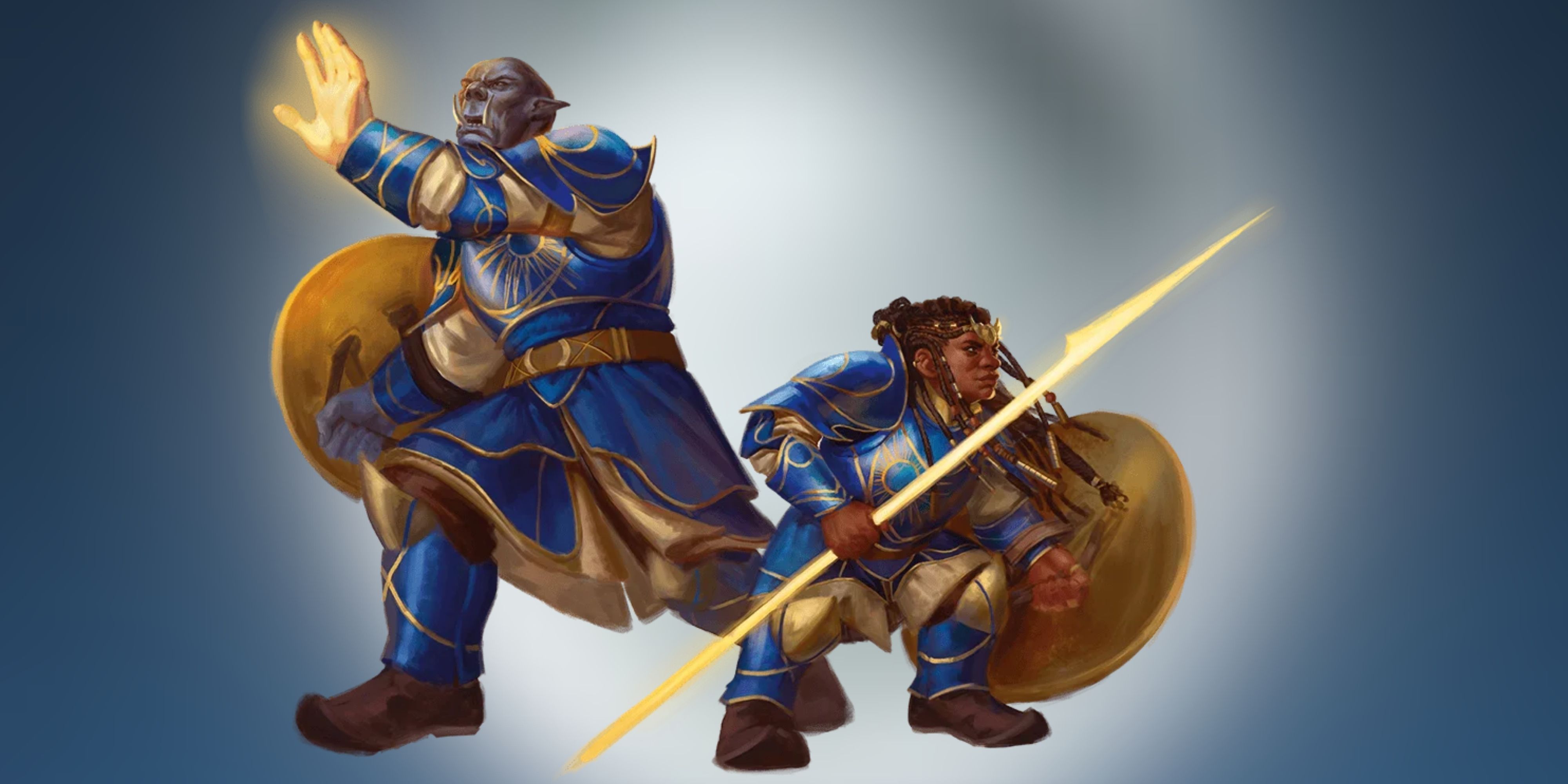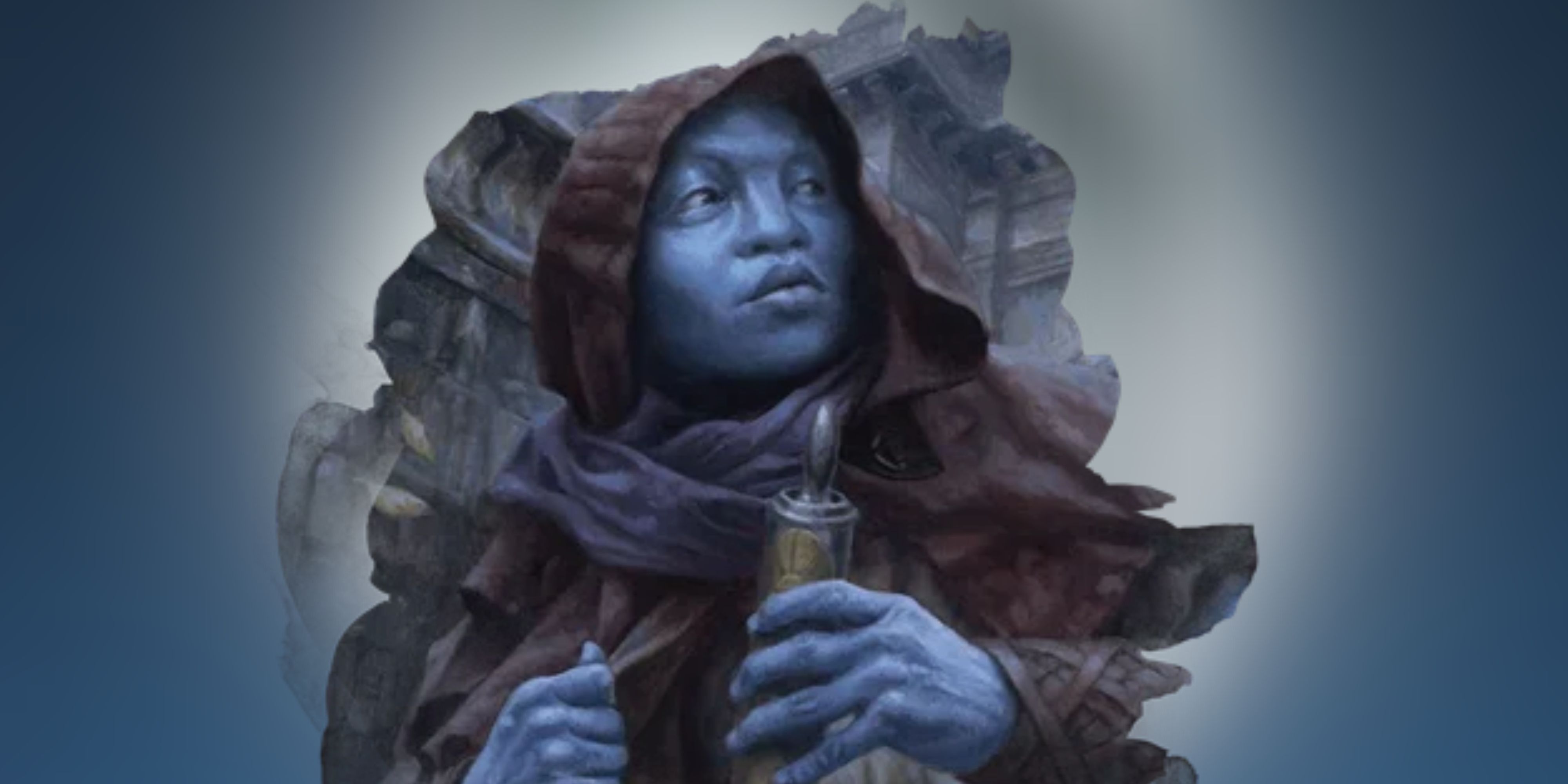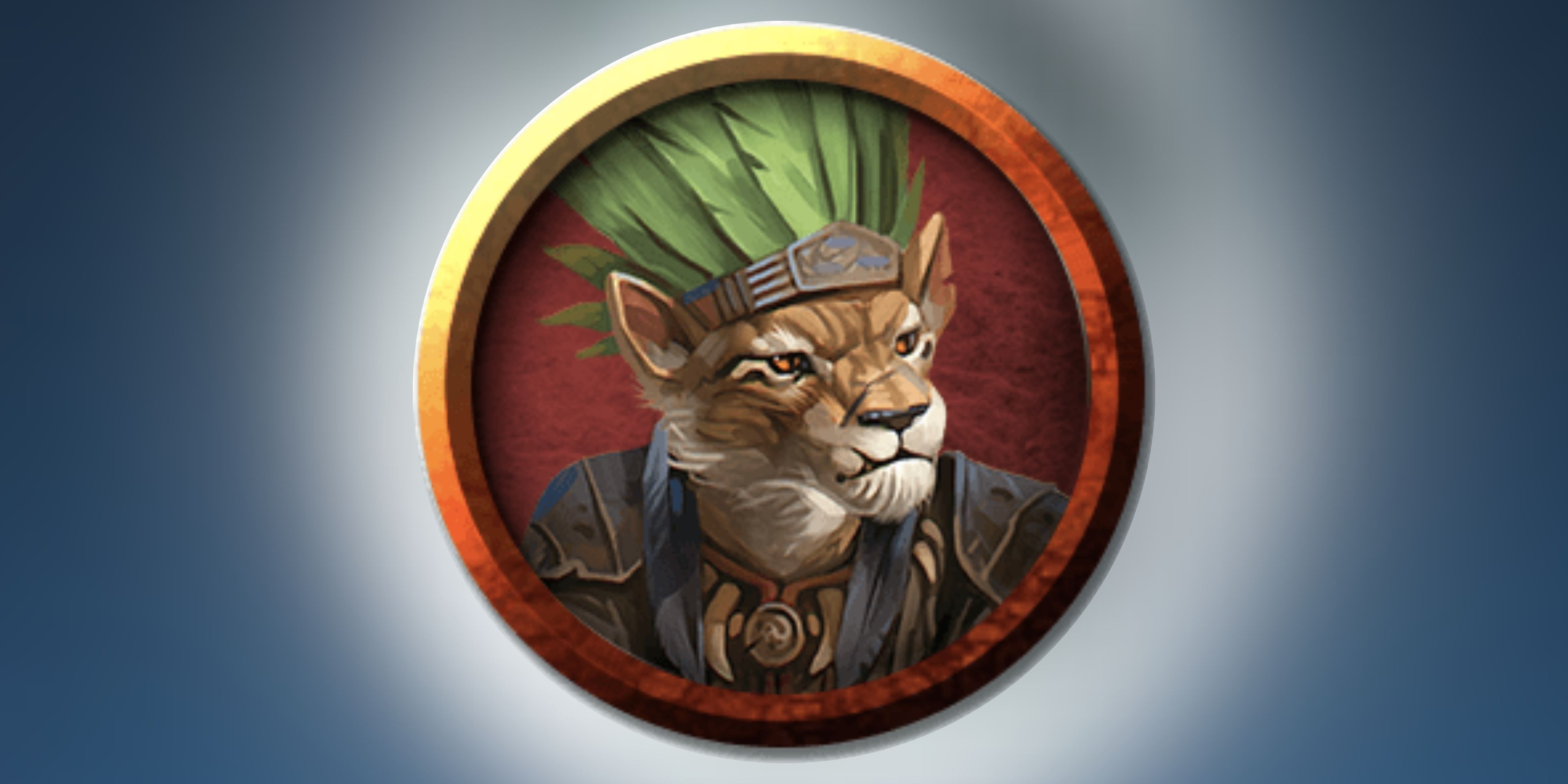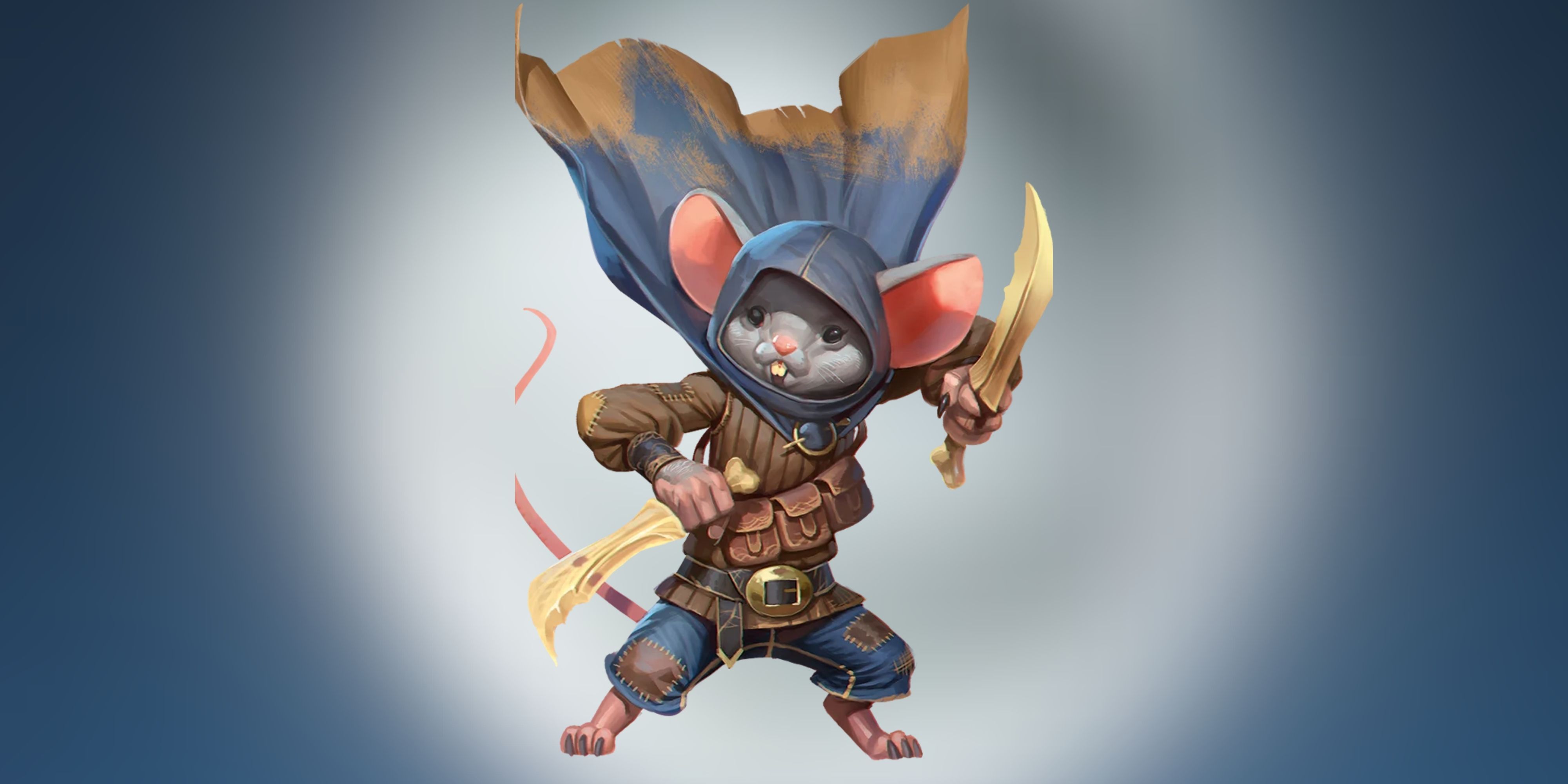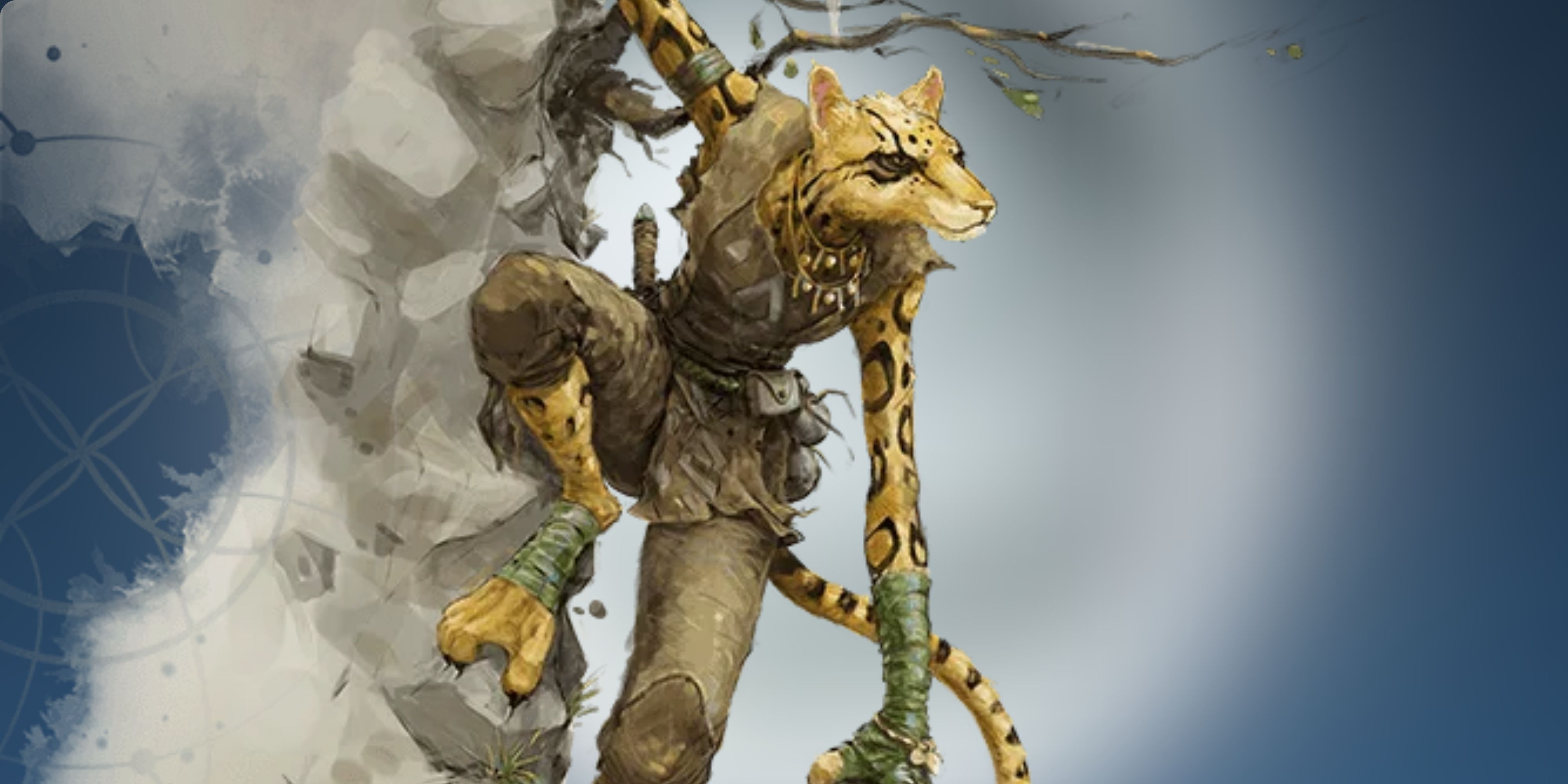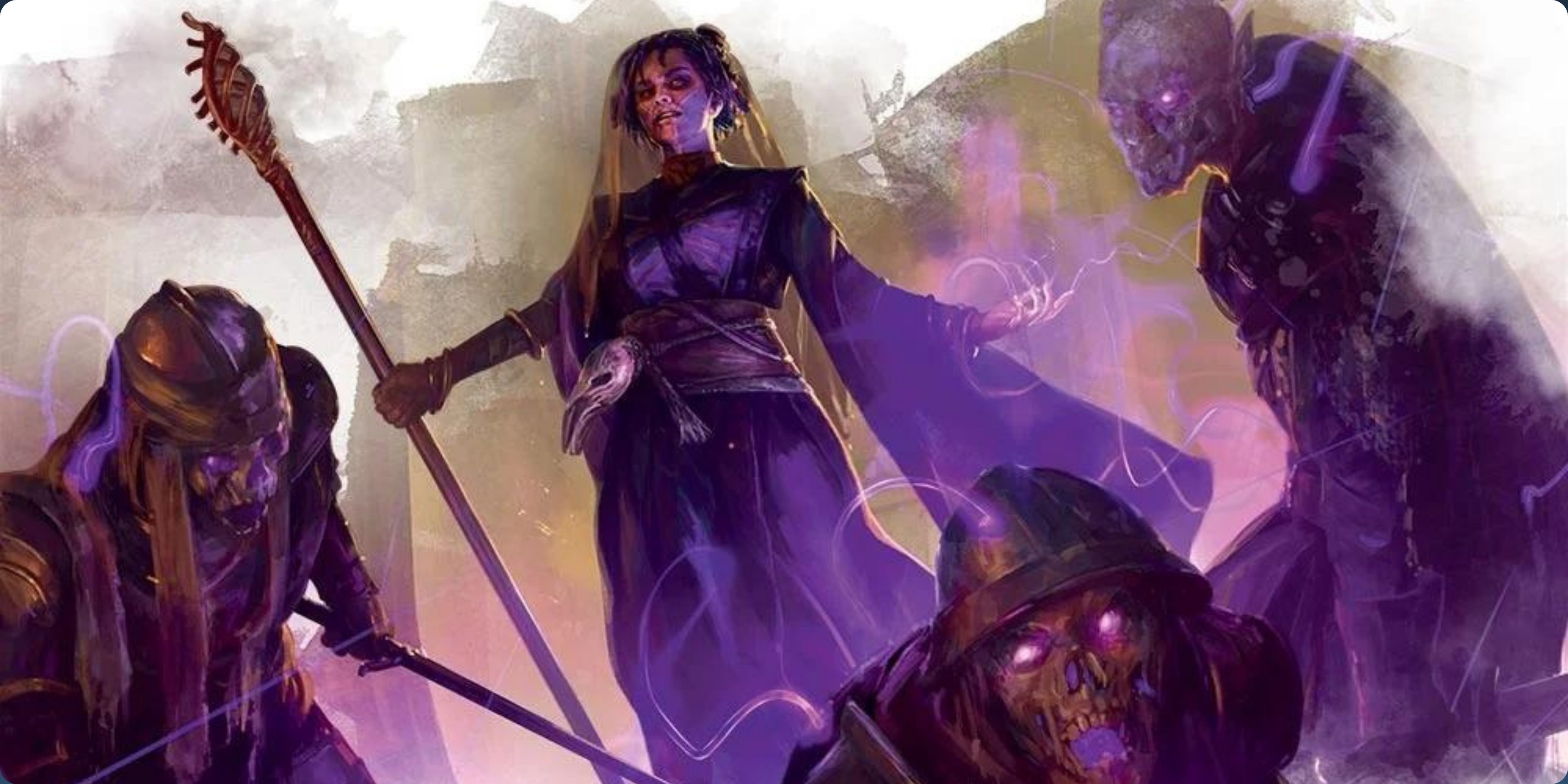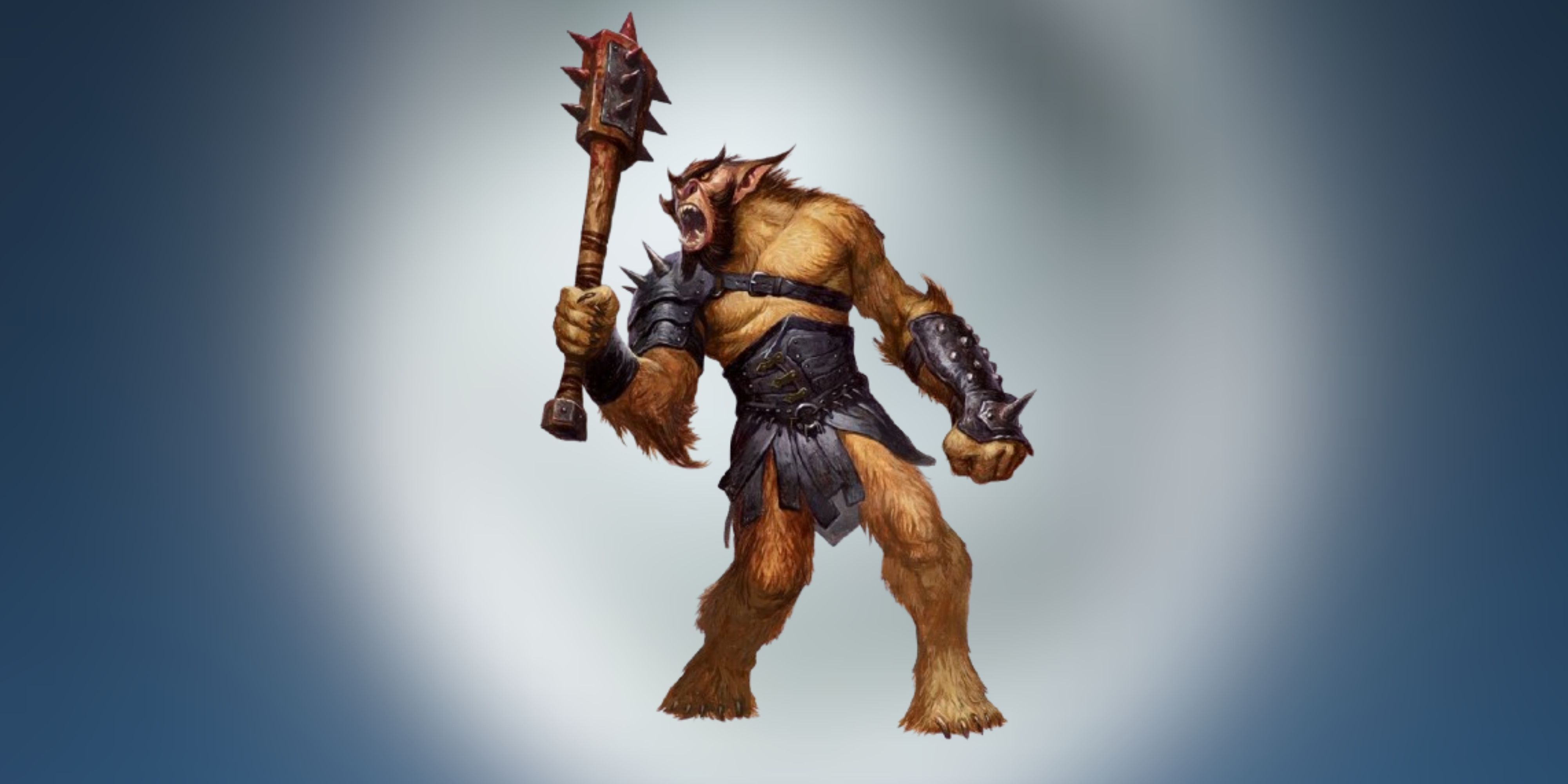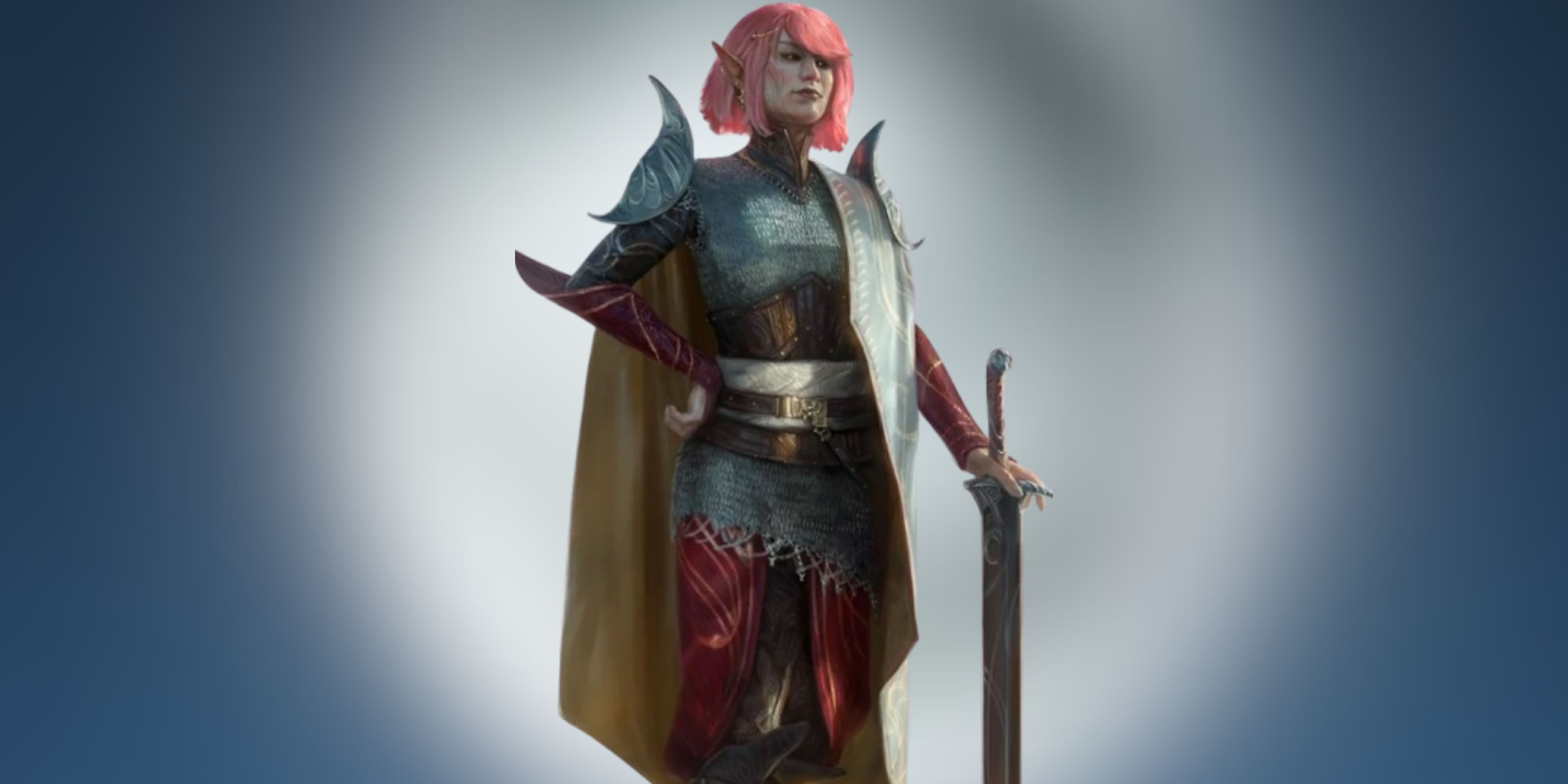Games
Dungeons & Dragons: Broken Character Builds

Key Takeaways
Table of Contents
- The rules of D&D are bendable, allowing endless opportunities for creativity in character creation.
- Some exploitative builds in D&D break the game but offer valuable lessons on player creativity.
- Unique character builds like the Speedster or Necromancer Supreme offer unconventional strategies for success.
Dungeons & Dragons, the venerable tabletop RPG, is best known for its freeform nature and emphasis on freedom. The rules that govern it are remarkably bendable, and the number of possibilities is hindered only by one’s creativity. Dungeon Masters and players alike can create to their heart’s content, resulting in innumerable opportunities. This independence fuels the process of character creation, the ultimate expression of freedom and creativity among players. With access to various classes, subclasses, races, etc., players can create various characters.
Related
Dungeons & Dragons 5e: Best Magic Items For Bards
Bards in Dungeons & Dragons 5th edition need magical items that’ll complement their inherent abilities, which means more than just a new lute.
Such freedom of choice allows for vastly different characters with unique mechanics and playstyles. Although the character creation system of Dungeons & Dragons chiefly inspires creativity, some have taken advantage of its near-limitless capabilities. Through various exploits, players have devised numerous game-breaking builds capable of doing the impossible. While many dissuade such an exploitative practice, there is much to be learned from Dungeons & Dragons’ most broken character builds.
Updated on October 8, 2024, by Chad Thesen: Builds don’t need to be near the end of the game to be OP. Some can be OP for the scope of a game as early as second 2. It is also worth mentioning that, thanks to One D&D and it being “backward compatible” with 5e, there is a whole new world of broken builds that players have been exploring. Different DMs will approve of different rules, so be mindful of this. Players can also exploit the RAW (Rules as Written) for a single subclass to gain game-breaking results.
15 Ragesinger
Hard To Hurt, Harder To Hit
- Race Requirements: None
- Class Requirements: Barbarian, Wizard
- Subclass Requirements: Bladesinger (Wizard)
- Stat Requirements: Dexterity 20, Intelligence 20
- Magical Item Requirements: Amulet of Health
RECOMMENDED LEVEL DISTRIBUTION
|
Level |
Class |
|---|---|
|
1-2 |
Wizard |
|
3 |
Barbarian |
|
4-20 |
Wizard |
The Barbarian is synonymous with the Strength stat, but their other class features work unbelievably well with a Wizard using the Bladesinger subclass. Unarmored Defence stacked with Bladesong means this multiclass adds their Dexterity, Constitution, and Intelligence Modifiers to their AC. Raising both Intelligence and Dexterity to 20, along with wearing an Amulet of Health for 19 Constitution, results in a base AC of 24 — note that you cannot use a shield with Bladesong.
This makes for a very fearsome Dexterity-focused damage dealer that can use Rage to become resistant to Bludgeoning, Piercing, and Slashing damage types. If this character takes damage, they can use the Song of Defense feature to lower the amount of damage by expending spell slots — with higher spell slots reducing more damage. While this Ragesinger character is still at a lower level, such as the third level, they can cast the Mirror Image spell with a 2nd level spell slot before entering their Rage to bolster their survivability.
14 The Coffeelock
Infinite Spell Slots
- Race Requirements: None
- Class Requirements: Sorcerer, Warlock
- Subclass Requirements: Divine Soul (Sorcerer)
- Stat Requirements: None
- Feat Requirements: None
RECOMMENDED LEVEL DISTRIBUTION
|
Level |
Class |
|---|---|
|
1-3 |
Warlock |
|
4-5 |
Sorcerer |
|
6-11 |
Warlock |
|
12-20 |
Sorcerer |
The most infamous broken build by far is the Coffeelock. A ridiculously delightful combination of the naturally gifted Sorcerer and otherworldly blessed Warlock, the Coffeelock grants players unlimited spells. In addition, this build also eliminates the need for long rests, hence the name Coffeelock. Despite repeated arguments concerning its legality, the Coffeelock continues to be a good and capable character build.
The Coffeelock requires a character to have at least two levels in Sorcerer and three in Warlock. Thus, providing them access to the Font of Magic and Pact of the Tome features. The former allows a character to convert Sorcery Points into Spell Slots and vice versa — the key mechanic of the Coffeelock. The latter allows a character to acquire the Eldritch Invocation, Aspect of the Moon, eliminating the need for a long rest. This set of somewhat disjointed abilities lets a character rely solely on short rests to recuperate.
Thus, a Coffeelock can take a short rest, recover spell slots, convert them into Sorcery Points or vice versa, and repeat — essentially granting infinite Spell Slots. The only downside of this build is the consequence of not finishing long rests. Prolonged periods without long rests will result in Exhaustion, an effect that incrementally worsens and can even cause death. The only way to avoid this detriment is through the Greater Restoration spell, obtainable through the Divine Soul Sorcerer Subclass. Such a spell requires diamond dust worth 100 gold pieces. Although expensive at first, eventually, a Coffeelock can discover a way to mitigate the cost.
13 The Goodberry Master
Breaking The Healing Economy
- Race Requirements: None
- Class Requirements: Cleric, Druid
- Subclass Requirements: Life Domain (Cleric)
- Stat Requirements: None
- Feat Requirements: Magic Initiate (Druid)
RECOMMENDED LEVEL DISTRIBUTION
|
Level |
Class |
|---|---|
|
1 |
Cleric |
|
2-3 |
Druid |
|
4-20 |
Cleric |
The Goodberry Master is a lesser-known but undeniably broken build. Utilizing the Cleric class and Magic Initiate Feat, the Goodberry Master offers substantial, cost-effective healing all in a single Goodberry. As a bonus, these Goodberries grant nourishment for an entire day, removing the need for rations. Although somewhat lackluster by comparison, the Goodberry Master is the only build capable of healing forty hit points with a 1st Level Spell.
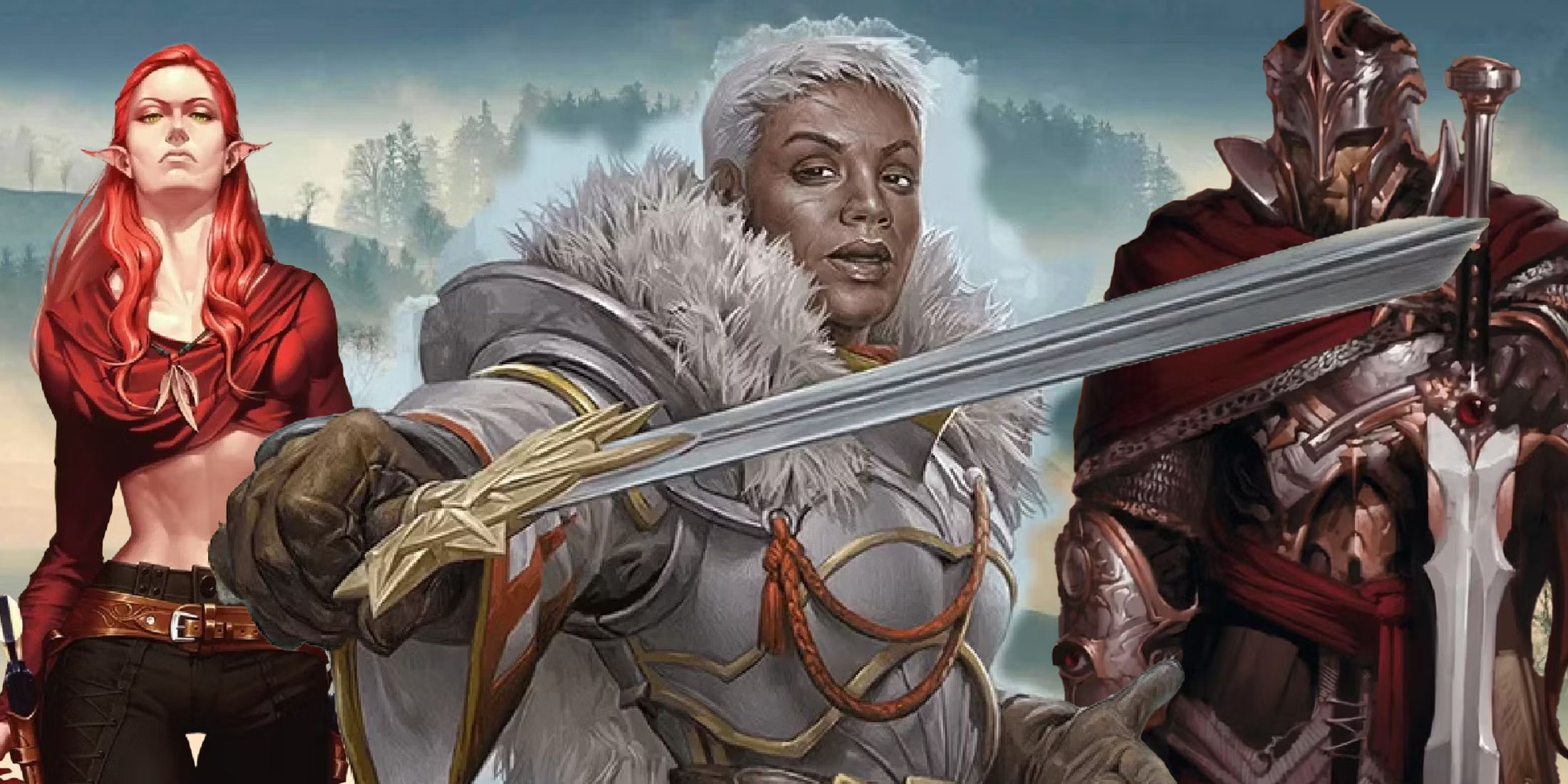
Related
Dungeons And Dragons: 17 Best Feats For Fighters To Take
These feats are guaranteed to bring the edge to any Fighter character in Dungeons & Dragons.
The Goodberry Master requires a character to take at least one level in Cleric, choosing the Life Domain. Doing so grants them the Disciple of Life feature, which increases the number of hit points regained from healing spells to two plus the spell’s level. In addition to this ability, players need the Magic Initiate Feat for the Druid spell list. Alternatively, one can dip into Druid, which is recommended as it makes a character a flexible healer who can do more in and out of combat. The Magic Initiate Feat will grant a character access to the Goodberry spell — the main focus of the Goodberry Master.
With these features, a character can produce Goodberries capable of healing at a minimum of 4 hit points each. While seemingly unimpressive at first, one must consider that the Goodberry spell conjures up to ten Goodberries, meaning forty hit points in total. Such incredible healing capabilities are remarkable for a 1st level spell, and it becomes far more beneficial when cast at higher levels. The only downside, albeit trivial, is the need for a druidic focus, which is not much considering that they can use something as cheap as a sprig of mistletoe. Both of these necessities are easily obtainable and well worth the effort.
12 The Jack Of All Trades
Taking The Term Skill Monkey To A Whole New Level
- Race Requirements: Half-Elf or Variant Human
- Class Requirements: Bard, Cleric, Rogue
- Subclass Requirements: College of Lore (Bard), Knowledge Domain (Cleric)
- Stat Requirements: Dexterity 13, Charisma 13, Wisdom 13,
- Feat Requirements: Skilled
RECOMMENDED LEVEL DISTRIBUTION
|
Level |
Class |
|---|---|
|
1-2 |
Bard |
|
3-4 |
Cleric |
|
5-10 |
Rogue |
|
11-20 |
Bard |
The Jack of All Trades is a strange, broken build that puts all its stock on a nifty perk of being a Bard — that is, being somewhat good at everything. With aid from a race, several classes, and the Skilled Feat, the Jack of All Trades becomes proficient in every skill imaginable. Rather than being a master of none, this build makes a character versatile while providing expertise in some areas. Although not as traditionally powerful comparatively, the Jack of All Trades is essentially a multifunctional character fit for any situation.
The Jack of All Trades requires a character to be a Half-Elf or Variant Human, as each grants many starting skills. In addition, they must take, at minimum, three levels in Bard, one in Cleric, and one in Rogue. With a level in Rogue, a character gains proficiency in four skills and expertise in two — or one skill and Thieves’ Tools, should they prefer. By taking a level in Cleric and choosing the Knowledge Domain, a character gains proficiency in two languages and two skills — ability checks made using these skills act as if they have expertise.
By taking three levels in Bard and choosing the College of Lore, a character gains proficiency with instruments and six skills with expertise in two. Finally, a character must take the Skilled Feat, which makes them proficient in three skills of their choice. Once they reach their 5th level, a character can become proficient in nearly every skill. Thus, the Jack of All Trades is a living pocket knife perfect for most situations, especially those that seem unlikely. This build not only makes for outstanding utility but decent support as well.
11 Darkblade Warlock
Striking From The Magical Shadows
- Race Requirements: Human (Variant)
- Class Requirements: Warlock
- Subclass Requirements: Hexblade (Warlock)
- Stat Requirements: None
- Feat Requirements: Sentinel
RECOMMENDED LEVEL DISTRIBUTION
The Darkblade is a way to brutally punish any enemy that finds itself within melee range of the character and does not require any multiclassing. The player will start by taking Devil’s Sight as one of their Eldritch Invocations at level 2. They will then cast the 2nd level spell, Darkness, on their own melee weapon. This means they have a shroud of darkness that will extend 15 feet from their weapon, with them inside the shroud. This darkness will follow them around wherever they move, and since it is magical darkness, enemies with Darkvision cannot see through it. This build comes alive at 2nd level and just continues to get stronger.
By taking the Variant Human race, this character can get the Sentinel feat at level 1. The Darkblade Warlock can then approach an enemy and attack with advantage since the enemy cannot see them. Enemy attacks will be at a disadvantage, and if they try to run, the Sentinel feat allows a successful opportunity attack to reduce the foe’s speed to zero — and all opportunity attacks will be at advantage. If the user has the Booming Blade cantrip, this can deal extra damage if their foe attempts to try to run while in the darkness. This lets players lord a significantly unfair edge over their targets.
10 The Pallock
Getting The Most Of Maximum Charisma
- Race Requirements: None
- Class Requirements: Paladin, Warlock
- Subclass Requirements: Hexblade (Warlock)
- Stat Requirements: Strength 13, Charisma 13
- Feat Requirements: None
RECOMMENDED LEVEL DISTRIBUTION
|
Level |
Class |
|---|---|
|
1-2 |
Paladin |
|
3-5 |
Warlock |
|
6-9 |
Paladin |
|
10-20 |
Warlock |
The Pallock is an exceedingly powerful yet somewhat contradictory broken build known by many fans. Using the divinity of Paladins and the taboo magic of Warlocks, the Pallock can unleash devastating blows capable of decimating nearly anything with only a few hits. Such a unique combination allows for many potent variations of this build, which prove effective regardless. Thus, making the Pallock among the most customizable and deadliest builds possible.
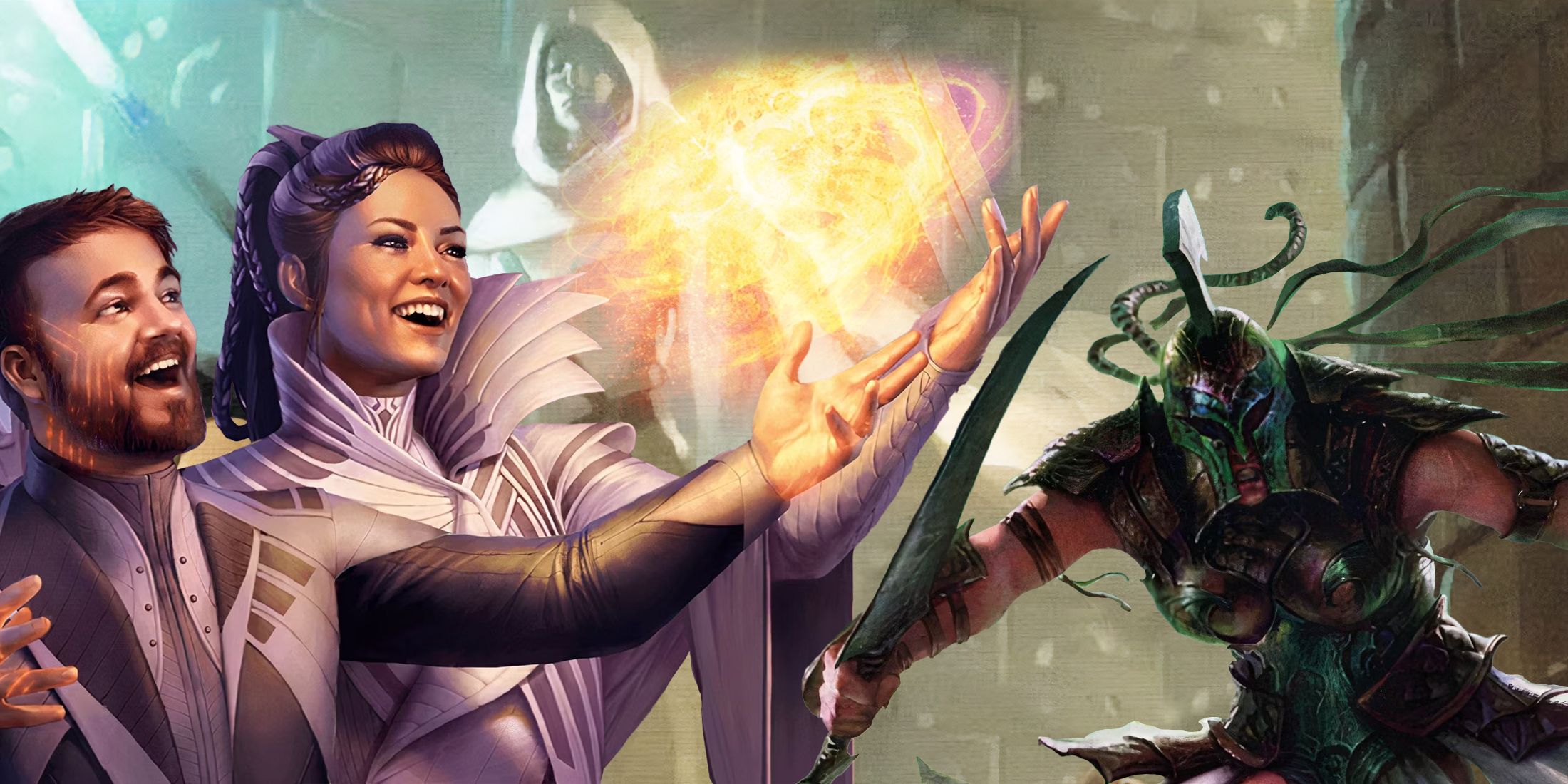
Related
Dungeons & Dragons: 15 Best Cantrips In 5e
Spellcasters have access to all kinds of cantrips. Some stand out as the best, so here’s what magically-inclined adventurers should prioritize.
The Pallock requires a character to have at least two levels in Paladin and three in Warlock, although they will likely take more. With three levels in Paladin, a character gains access to the Divine Smite feature. Divine Smite will contribute to the immense damage-dealing potential of this build. Three levels in Warlock will grant a character access to the Pact Boon and the Hexblade subclass.
Upon gaining the Pact Boon feature, a character should choose the Pact of the Blade as it offers the most benefits for what this build is to achieve. The Hexblade subclass grants a character additional damage-dealing potential in the Hexblade’s Curse feature. Together, these classes provide a character with the means to defeat even the strongest and bulkiest enemies with a single blow. The destructive capabilities of the Pallock become increasingly powerful when a character takes more levels in either class. However, six levels in Paladin and fourteen levels in Warlock are preferable to attain a ridiculously effective build.
9 The Hexblade Sniper
Optimizing Crossbow Effectiveness
- Race Requirements: None
- Class Requirements: Fighter, Warlock
- Subclass Requirements: Hexblade (Warlock)
- Stat Requirements: Strength or Dexterity 13, Charisma 13
- Feat Requirements: Crossbow Expert, Sharpshooter
RECOMMENDED LEVEL DISTRIBUTION
|
Level |
Class |
|---|---|
|
1-2 |
Fighter |
|
3-5 |
Warlock |
|
6-9 |
Fighter |
|
10-20 |
Warlock |
The Hexblade Sniper is a seemingly counterintuitive build considering that Warlocks often depend on Eldritch Blast, but it is arguably the best ranged-attacker build. With a trusty crossbow, the eldritch magic of a Warlock, and the martial prowess of a Fighter, this build can effortlessly dispatch foes from any distance. Unlike other ranged-attacker builds, the Hexblade Sniper can not only inflict devastating damage per hit but also weaken enemies beforehand. This build’s unique combo grants players an intriguing concept to work with and deadly ranged proficiency that is as, if not better, than eldritch blast in many respects.
The Hexblade Sniper requires a character to take at least three levels in Warlock and two in Fighter. The three levels in Warlock will grant a character access to two Eldritch Invocations, a Pact Boon, and the Hexblade subclass. These features provide a character with many benefits that work to improve a character’s damage-dealing potential. The two levels in Fighter will grant a character a Fighting Style, Second Wind, and Action Surge. A character should also select the Sharpshooter and Crossbow Expert Feats as they make crossbows more versatile and efficient. A character can utilize their crossbow more effectively with these benefits, making them a masterful and formidable sniper that will give Rangers a run for their coins.
The Hexblade subclass gives a character the Hexblade’s Curse feature, which benefits them at the expense of their enemy, and the Hex Warrior feature, which grants them access to martial weapons and allows them to utilize Charisma rather than Strength or Dexterity for weapon attacks. A character should take the Pact of the Blade to improve their crossbow and meet the prerequisites for Eldritch Invocations, such as Eldritch Smite. These features, in conjunction with those provided by the two levels in Fighter, allow the Hexblade Sniper to unleash several devastating attacks that become even more deadly through the use of spells or hexes.
8 Twilight Blood Knight
Boon Fueled Frontliner
- Race Requirements: Variant Human
- Class Requirements: Cleric
- Subclass Requirements: Twilight Domain
- Stat Requirements: None
- Feat Requirements: Vital Sacrifice
Players will want to start off by creating a Variant Human with the Cleric class. Clerics can choose a Domain starting at level 1, so players will take the Twilight Domain at first level. Starting at second level, the player can then use their Channel Divinity for Twilight Sanctuary. This gives all their allies 1D6 plus their level in temporary hit points — for 10 turns. Variant Humans gain a Feat at the first level and will use it to take Vital Sacrifice.
This means they can take 1d6 worth of damage as a bonus action to gain a Blood Boon for that turn. These Blood Boons can stack and will last for 1 hour. When the player makes an attack with this Blood Boon, they can deal an extra 2D6 worth of damage. This means a level 2 Twilight Cleric can deal 4D6 plus their Strength modifier every turn without costing them any HP for 10 turns.
7 The Untouchable
Advantage for Almost Every Saving Throw
- Race Requirements: Vedalken
- Class Requirements: Barbarian
- Subclass Requirement: None
- Stat Requirements: None
- Feat Requirements: Durable
|
Level |
Class |
|---|---|
|
1-2 |
Barbarian |
Players can start by taking the Durable feat during their character creation thanks to 1st-level feats in the One D&D ruleset. This will give them advantage whenever they roll a Death Saving Throw. For their race, players will take Vedalken. Vedalken have advantage in their Intelligence, Wisdom, and Charisma Saving Throws. For their class, players will take Barbarian to give themselves proficiency in both their Strength and Constitution Saving Throws. They will also gain advantage on their Strength Saving Throws while they are raging, and Danger Sense will give them advantage on their Dexterity Saving Throws.
This creates a character that will have advantage in every Saving Throw in the game, including Death Saving throws. Making them the hardest characters to kill in the early parts of the game, and still incredibly hard to kill in high-level campaigns. Players who want to go beyond this can look into taking Path of Zealot as their Barbarian subclass.
6 The Speedster
No Such Thing As Not Enough Movement
- Race Requirements: Tabaxi
- Class Requirements: Barbarian, Fighter, Monk, Wizard
- Subclass Requirements: Path of the Totem Warrior (Barbarian), Bladesinging (Wizard)
- Stat Requirements: Strength 13, Dexterity 13, Intelligence 13, Wisdom 13
- Feat Requirements: Mobile
RECOMMENDED LEVEL DISTRIBUTION
|
Level |
Class |
|---|---|
|
1-4 |
Monk |
|
5-6 |
Fighter |
|
7-8 |
Wizard |
|
9-13 |
Barbarian |
|
14-20 |
Monk |
The Speedster is a build that grants freedom of movement unlike any other, allowing a character to travel ridiculous distances easily. Utilizing the natural swiftness of Tabaxis, the speed-enhancing features of various classes, and astounding Feat, a character can clear hundreds of feet within a single round, which is miraculous considering that period is about six seconds. This rapidness is something that only the Speedster build is capable of, and although it seems ridiculous, being able to move this quickly is immensely advantageous.
The Speedster requires a character to take at least five levels in Barbarian, two in Fighter, ten in Monk, and two in Wizard. A character must also choose the Path of the Totem Warrior of the Elk and the Bladesinging subclass. These class and subclass options will grant a bonus upon a character’s base speed. The most vital requirement of this build is for a character to be a Tabaxi as they possess the Feline Ability feature, which allows them to double their speed for one turn. Another necessary aspect of this build is the Mobile Feat which grants additional speed and eliminates the penalty of disadvantageous terrain.
Altogether this conglomeration of classes, subclasses, etc., will elevate a character’s base speed of thirty to an unprecedented 95 feet when movement-improving features are activated. Moreover, players can use Dash for their action and bonus action alongside the Feline Agility feature and spells like Longstrider or Haste to move further, bringing up the distance a character can move in a single turn to 840 feet. This impossible speed is achievable from the efforts of a single character, but with aid from others, it can reach ridiculous highs such as 37,520 feet a round. The Speedster is truly a build distinct from any other.
5 The Battlefield Manipulator
Non-Magic Controller
- Race Requirements: None
- Class Requirements: Fighter, Rogue
- Subclass Requirements: Battlemaster (Fighter), Swashbuckler (Rogue)
- Stat Requirements: Dexterity 13
- Feat Requirements: Martial Adept
RECOMMENDED LEVEL DISTRIBUTION
|
Level |
Class |
|---|---|
|
1 |
Fighter |
|
2-12 |
Rogue |
|
13-20 |
Fighter |
The Battlefield Manipulator is a build that asserts control over any battle, all without the use of fancy spells and inventive machines. Instead, a character using this build will dominate any confrontation using the tactical wit of the Battlemaster Fighter and the Swashbuckler Rogue’s fleetness, whether by supporting allies or dancing around enemies in an almost mocking manner. The Battlefield Manipulator is best suited for those who want control over any fight — and even some social situations — acting almost as a general overseeing a war.
The Battlefield Manipulator requires a minimum of three levels in Fighter and three in Rogue to get the tactician-like feel of this build. Doing so gives a character the three features necessary for battlefield manipulating antics: Combat Superiority, Fancy Footwork, and Rakish Audacity. The maneuvers and superiority dice granted by Combat Superiority are the meat of this, as they allow a character a wide variety of actions, bonus actions, and reactions to take on their turn or those of others. The Swashbuckler’s ability to engage and disengage enemies — striking quickly and lethally with sneak attacks — allows them to get into the thick of battle and retreat without consequence. When used together, these features make for a character that can observe a fight and influence it from the outskirts or up close, aiding allies, hindering enemies, and ensuring their survivability.
While this build seems to conflict — after all, Battlemaster and Swashbuckler do not scream complementary — it works extraordinarily well. There are countless ways each subclass benefits the other, the most notable instance being the Ambush maneuver, which allows a character to expend a superiority die and add the number rolled to any Dexterity (Stealth) check or an initiative roll, giving the edge necessary for a swift and decisive sneak attack. Other avenues the Battlefield Manipulator can take to alter the course of a fight include using a Disarming Attack, Distracting Strike, or Goading Attack maneuver, which are monumental means of shifting a battle in one’s favor. Regardless of how this build approaches a conflict, it will always ensure that a character has a say in its direction while ensuring their safety.
4 The Roadburner
High Momentum Mayhem
- Race Requirements: Tabaxi
- Class Requirements: Druid, Rogue
- Subclass Requirements: Circle of the Moon (Druid)
- Stat Requirements: Dexterity 13, Wisdom 13
- Feat Requirements: Mobile
RECOMMENDED LEVEL DISTRIBUTION
|
Level |
Class |
|---|---|
|
1-2 |
Rogue |
|
3-20 |
Druid |
The Roadburner is an unconventional but fun build that does as the name suggests, whittling away enemies’ hit points by dragging them across the floor, except with a twist: a character using this build will be doing the dragging as an air elemental, and the floor will be of spiky growths. Although not roadburn exactly, this means of attacking deals much damage, and few things can negate it, making it an almost guaranteed way of taking enemies from full health to nothing. The Roadburner takes some build-up, but the idea of one-hit KO’ing most enemies is worth it.
The Roadburner needs a minimum of ten levels in Druid and two levels in Rogue, alongside selecting the Tabaxi race and picking up the Mobile Feat. Reaching level ten in Druid and choosing the Circle of the Moon subclass allows a character to Wild Shape into any of the four elements, but for this build, we will focus on the air elemental because of its incredible ninety-foot movement speed. Two levels in Rogue grant Cunning Action, allowing a character to use a bonus action for various actions, such as the Dash action, which will double the ninety-foot movement speed to 180. The Tabaxi race allows a character to double their speed until the end of the turn, bringing the 180 feet of movement to 360. Further improving this speed demands the Mobile feet, granting an additional ten feet, which, when doubled, brings up the total distance a character can cover to 380.
Now, grappling a creature halves speed, bringing this massive 380 feet down to 190, which is more than enough. To roadburn an enemy, a character must cast the spell Spike Growth, creating a twenty-foot radius of difficult terrain that is oh-so dangerous. Then, the Roadburner needs only to grapple an enemy, maximize their movement, and drag them through the Spike Growth radius, dealing 2d4 piercing damage for every five feet traveled. Should an enemy be dragged the entire 190 feet, they will be dealt 76d4 piercing damage, which averages to 190 piercing damage. For a bit of build-up and odd character creation choices, the Roadburner is an outstanding one-trick pony that can bring even the most hearty enemies down in one turn.
3 Necromancer Supreme
Forever Raising HP
- Race Requirements: Halfling (Mark of Hospitality), or any race if the party has a cleric
- Class Requirements: Wizard
- Subclass Requirements: Necromancer
- Stat Requirements: None
- Feat Requirements: None
RECOMMENDED LEVEL DISTRIBUTION
In Dungeons & Dragons, players will be able to create a Wizard that can take Necromancer as their subclass. The Aid spell is a 2nd-level spell that raises a target’s maximum HP by 5, and an additional 5 HP for every spell slot level above 2nd level. What completely breaks this is the Necromancer’s “Inured to Undeath” feature, which they get at their 10th level. This feature means their maximum HP can never drop. According to page 205 of the Player’s Handbook, spells cannot stack, and players only get the most potent version of them.
However, when the duration ends, the spell is considered to no longer be affecting its target, but that increase to maximum HP will remain. If there is no ally that can cast Aid, the player can do it themselves by setting their race as Halfling Mark of Hospitality, which can be found in the Eberron: Rising of the Last War sourcebook. If players have the Guildmaster’s Guide to Ravnica sourcebook as well, they can alternately choose either the Boros Legionnaire background or the Selesnya Initiate background.
Aid has a duration of 8 hours. This means a 10th-level Necromancer Supreme with two 5th-level spell slots can raise their maximum HP by 40 HP each day, or 60 HP if an ally also has Aid. This can be done by casting it at the start of a long rest, casting at the end of a long rest, and waiting 8 hours between the two.
2 The Ambusher
Massive Damage On First-Turn Attacks
- Race Requirements: Bugbear
- Class Requirements: Fighter, Ranger, Rogue
- Subclass Requirements: Echo Knight (Fighter), Gloom Stalker (Ranger), Assassin (Rogue)
- Stat Requirements: Dexterity 13, Wisdom 13
- Feat Requirements: Alert
RECOMMENDED LEVEL DISTRIBUTION
|
Level |
Class |
|---|---|
|
1-3 |
Rogue |
|
4-6 |
Ranger |
|
7-9 |
Fighter |
|
10-20 |
Rogue |
The Ambusher is a build perfect for executing flawless surprise attacks, taking down dangerous foes before they even get a turn. The surprising stealthiness of the Bugbear lends itself well to all manner of ambush-favoring options that, when used together, guarantee a deadly first strike. The Ambusher demands a lot of dipping into several classes, none of which seem a good fit, but the results of this mix-mashed build are more than worth it.
The Ambusher build requires a minimum of three levels in Fighter, three in Ranger, and four in Rogue, with the selection of the Bugbear race and the Alert feat. Reaching these levels grants several subclasses — Echo Knight, Gloom Stalker, and Assassin — necessary to make the most of an ambush. The first subclass grants the Manifest Echo feature, allowing a character to create an echo of themselves that can move and attack alongside them. The second gives Dread Ambusher, a feature that gives a bonus to initiative rolls equal to a character’s Wisdom modifier and increases their walking speed by ten feet, all while granting them an additional weapon attack that deals an extra 1d8 damage. The third feature is Assassinate, which gives advantage against enemies that have not taken a turn and guarantees a critical hit against surprised foes. This assortment of features makes surprise attacks much more effective, leaving much to be desired from pure Rogue characters. The Bugbear race has a feature, Surprise Attack, that further improves the effectiveness of ambushes by adding 2d6 damage against any enemy that has not taken a turn. Alert is the cherry on top that gives a +5 bonus to initiative rolls, improving the chances that a character will go first.
With all these traits working together, the Ambusher becomes a dangerous attacker who can end a fight even before it begins. Just one attack with a dagger at the minimum level requirements can deal an average of 35 piercing damage. Moreover, there is little chance the Ambusher will not go first, meaning they can take out key targets before they have an opportunity to rebut. If being the ultimate sneak attacker or assassin is one’s aim, there is no better choice than the Ambusher.
1 The Superior Seer
Darkblade Taken To A Whole New Level
- Race Requirements: None
- Class Requirements: Barbarian, Rogue, Warlock
- Subclass Requirements: Path of the Totem Warrior (Barbarian), Inquisitive (Rogue)
- Stat Requirements: Strength 13, Dexterity 13, Charisma 13
- Feat Requirements: Observant
RECOMMENDED LEVEL DISTRIBUTION
|
Level |
Class |
|---|---|
|
1-3 |
Rogue |
|
4-5 |
Warlock |
|
6-11 |
Barbarian |
|
12-20 |
Rogue |
The Superior Seer is a build that ensures nothing gets past a character’s eye, making even the most elusive things seeable. A character can achieve impossible vision through various character creation options that allow them to see from miles away through magical obstructions and means of concealment, leaving few means for others to avoid their detection. The Superior Seer needs much to achieve this incredible sight that will prove helpful in any situation.
The Superior Seer build demands a minimum of six levels in Barbarian, three in Rogue, and two in Warlock, alongside the Observant feat. The levels in Barbarian, with the Way of the Totem Warrior subclass, grant the Aspect of the Beast feature — for this build, choose the Eagle as it allows a character to see up to a mile away, 100 feet of which is in fine detail. Three levels in Rogue allow the selection of the Inquisitive subclass, granting the Eye for Detail feature that gives a character the unique ability to perceive a hidden creature or object. The few levels in Warlock are for the Eldritch Invocations feature, specifically the Devil’s Sight and Eyes of the Runekeeper invocations. The first provides a character with 120 feet of vision in darkness, whether normal or magical and the second grants the ability to read all writing. These features are supported by Observant, a feat that grants a +5 bonus to passive Wisdom (Perception) and passive Intelligence (Investigation) while allowing a character to read the lips of a creature speaking a language they know.
Although the Superior Seer seems niche and not as powerful as other broken, it proves outstanding when considering what is possible. With the various vision-enhancing choices made, a character can read a text in the most obscure language from over a mile away, interpret vital information from the lips of someone the same distance away, or cast the spell Darkness on themselves, obscuring them from enemies while still being able to see them. The possibilities are endless with the Superior Seer, and there are few situations they do not prove helpful.
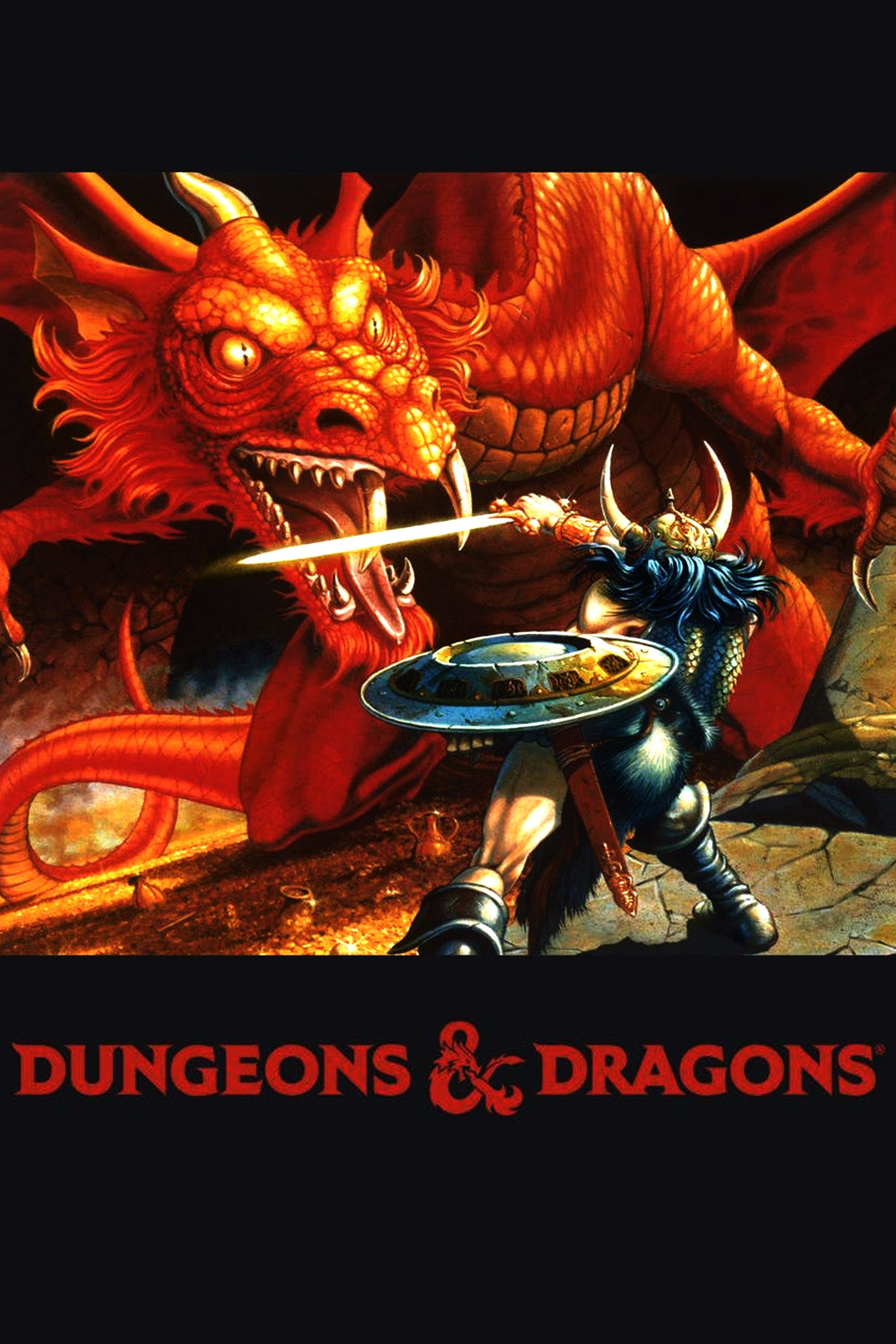
Dungeons and Dragons
- Original Release Date
- 1974-00-00
- Designer
- E. Gary Gygax , Dave Arneson
-

 What To Watch4 weeks ago
What To Watch4 weeks agoVenom 3 Ending, Post Credits Scenes Explained: Who Is Knull?
-
!['Venom: The Last Dance' ending, explained: What happened to [redacted]? 147 hero image.fill .size 1200x675.v1729702186](https://www.themearound.com/wp-content/uploads/2024/10/hero-image.fill_.size_1200x675.v1729702186-400x240.jpg)
!['Venom: The Last Dance' ending, explained: What happened to [redacted]? 148 hero image.fill .size 1200x675.v1729702186](https://www.themearound.com/wp-content/uploads/2024/10/hero-image.fill_.size_1200x675.v1729702186-80x80.jpg) Entertainment4 weeks ago
Entertainment4 weeks ago‘Venom: The Last Dance’ ending, explained: What happened to [redacted]?
-

 Movies4 weeks ago
Movies4 weeks agoBilly Crystal Struggles to Clarify Apple TV+’s Haunting New Horror Series “Before” | TV/Streaming
-

 What To Watch3 weeks ago
What To Watch3 weeks agoA Haunting Meta Doc About Ukraine’s Invasion
-

 Tech3 weeks ago
Tech3 weeks agoAutumn Internationals 2024 live stream: how to watch rugby union
-

 Entertainment4 weeks ago
Entertainment4 weeks agoM4 Mac mini vs. M2 Mac mini: What are the differences?
-

 Tech4 weeks ago
Tech4 weeks agoAMD’s leaked Ryzen 7 9800X3D performance boost over the 7800X3D might be a reason for you to wait before your next CPU upgrade
-

 What To Watch3 weeks ago
What To Watch3 weeks agoNvidia Replaces Intel on Dow Jones Industrial Average

